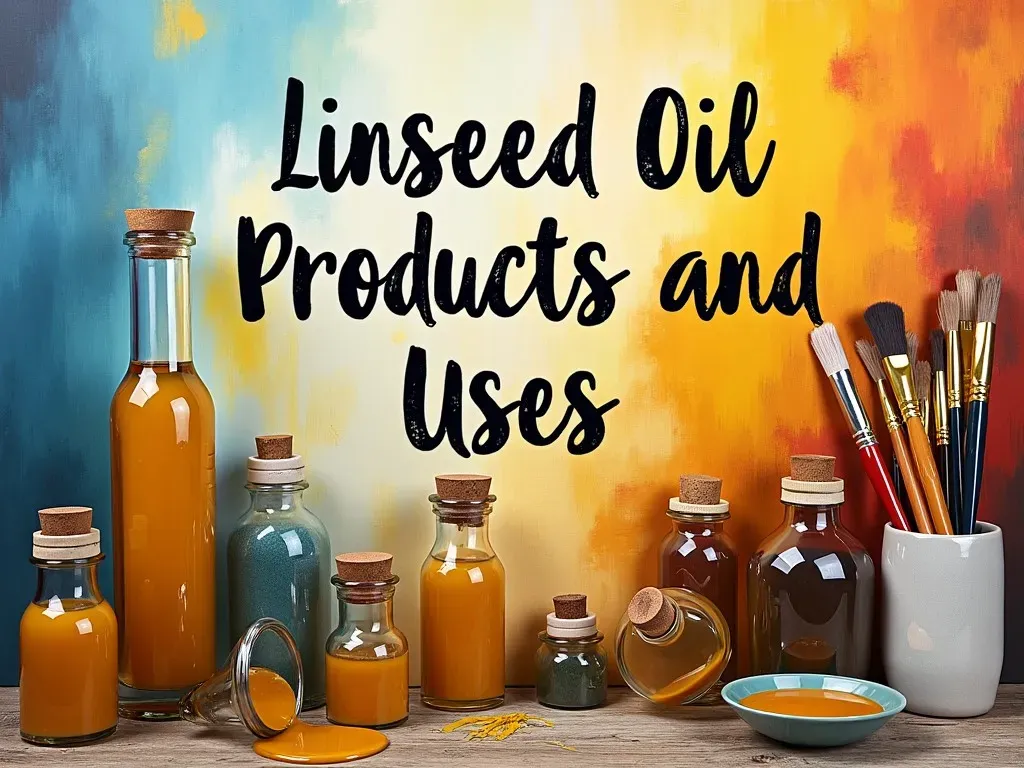Linseed oil for paint is a crucial element in the world of oil painting. This natural substance, derived from flax seeds, is not just a medium but an essential component that affects the overall quality, texture, and durability of the paint.
What is Linseed Oil Used For in Oil Painting?
Linseed oil has a multi-faceted role in oil painting. Primarily, it serves as a binder that holds the pigments together, allowing for even dispersion and consistency in color application. Additionally, it modifies the texture of the paint, making it smoother and easier to work with.
| Function | Description |
|---|---|
| Binder | Holds pigments together, maintaining color integrity. |
| Medium | Alters the texture and viscosity, allowing for varied Techniques. |
| Drying Agent | Enables slower drying for detailed layering and blending. |
How Linseed Oil Enhances Oil Paint
Linseed oil plays several roles in enhancing oil paint, including:
- Improved Pigment Dispersion: It helps in achieving uniform color distribution in the paint mixture, preventing clumping.
- Flexibility: This oil adds flexibility to dried paint, reducing the likelihood of cracking or peeling.
- Gloss Finish: Linseed oil contributes to a natural gloss, enriching the vibrancy of the colors.
- Slow Drying Time: Artists often value linseed oil for its ability to slow down the drying process, which is ideal for techniques requiring blending and glazing.
The Science Behind Linseed Oil
Linseed oil is composed of fatty acids that undergo chemical reactions upon exposure to air. This process, known as oxidation, transforms liquid linseed oil into a solid, durable film through cross-linking. Here’s a breakdown of its components:
| Component | Function |
|---|---|
| Alpha-Linolenic Acid | Provides flexibility and durability. |
| Linoleic Acid | Contributes to the drying properties. |
| Oleic Acid | Enhances flow and application. |
Common Uses of Linseed Oil in Oil Painting
In the realm of oil painting, linseed oil is utilized for several purposes:
- Mixing with Pigments: Artists mix different pigments with linseed oil to create unique shades and effects.
- Creating Glazes: By diluting the oil, artists can create transparent layers that add depth to their work.
- Varnishing: Once the paint dries, linseed oil can be used in varnishing to enhance the durability and appearance of the finished artwork.
The Benefits of Using Linseed Oil for Paint
1. Easy Application
Linseed oil allows for smoother application on various surfaces, be it canvas, wood, or metal. The consistency and flow it imparts make it a favorite among artists.
2. Eco-Friendly Option
Derived from flax seeds, linseed oil is a natural product with low toxicity levels. For environmentally-conscious artists, it serves as an excellent alternative to synthetic mediums.
3. Versatility
From traditional oil painting to modern artistic expressions, linseed oil can adapt to diverse techniques, making it suitable for artists of all styles.
4. Historical Significance
Linseed oil has been a trusted medium since the 12th century, representing a long-standing tradition in the art world. This rich history adds cultural depth to its use.
Reference Video
FAQ About Linseed Oil for Paint
Q: What does linseed oil do to oil paint?
A: Linseed oil acts as a binder, enhances flow, and extends drying time, allowing for better blending and layering.
Q: How does linseed oil affect drying times?
A: Linseed oil slows down the drying process, which can be beneficial for artists who need extra time for adjustments or detailed work.
Q: Can linseed oil be used with other mediums?
A: Yes, many artists combine linseed oil with turpentine or mineral spirits to achieve desired textures and effects.
Q: Is linseed oil safe to use?
A: Generally, linseed oil is considered safe, but precautions should be taken to avoid ingestion or prolonged skin exposure.
Q: How do I clean brushes after using linseed oil?
A: Brushes can be cleaned using mineral spirits or soap and water, making sure to remove all excess oil for proper maintenance.
Comparing Linseed Oil with Other Mediums
| Medium | Drying Time | Flexibility | Finish |
|---|---|---|---|
| Linseed Oil | Slower drying | Highly flexible | Glossy |
| Turpentine | Faster drying | Less flexible | Matte |
| Safflower Oil | Medium drying | Moderately flexible | Semi-gloss |
| Poppy Oil | Slower drying | Flexible | Satin |
Painting Techniques with Linseed Oil
Artists often utilize linseed oil for various techniques:
- Glazing: Applying layers of translucent paint to create depth.
- Impasto: Using thick layers of paint for a three-dimensional effect.
- Scumbling: Rubbing a thin layer of opaque paint over a dried layer for texture.
Conclusion
Using linseed oil for paint unlocks a myriad of possibilities for artists, enhancing the quality of their work while offering a connection to traditional practices. For more detailed insights into linseed oil and oil painting, you can visit The Beginning Artist.
Embracing linseed oil not only enriches the artist’s toolkit but also fosters a deeper appreciation for the art of oil painting itself. Whether you are a novice or a seasoned professional, understanding the implications and advantages of this remarkable medium is essential for any creative endeavor.
